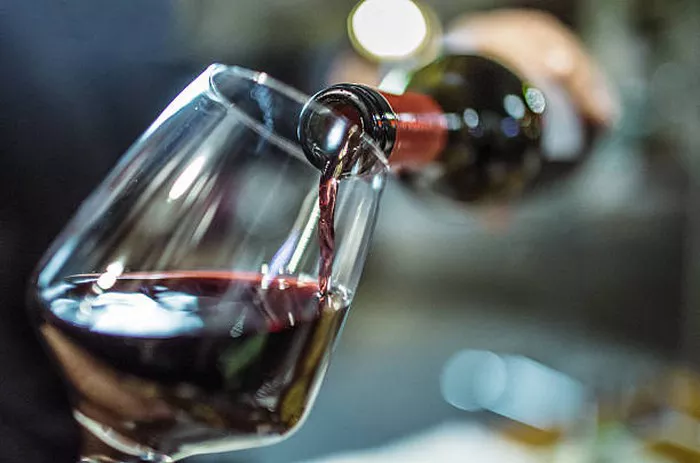When it comes to French wines, Sancerre holds a special place as one of the most renowned and cherished appellations. Located in the heart of the Loire Valley, Sancerre is celebrated for its exceptional white wines, particularly its Sauvignon Blanc. In this article, we’ll delve into the region of Sancerre, exploring its terroir, winemaking traditions, and what makes its wines so highly regarded.
Sancerre: A Terroir-Driven Appellation
Sancerre is not just a place; it’s a reflection of the unique terroir of the region. Terroir encompasses the specific combination of soil, climate, and geography that imparts distinct characteristics to the wines produced there. Sancerre’s terroir is a key factor in the quality and flavor of its wines.
Geography: The Loire Valley Gem
Sancerre is situated in the eastern part of the Loire Valley, a picturesque region known for its rolling hills and diverse microclimates. The vineyards of Sancerre are nestled along the Loire River, and their elevation on the slopes provides excellent sun exposure for grape ripening.
Soil Diversity: The Foundation of Flavor
One of Sancerre’s most remarkable features is its diverse range of soils, which play a pivotal role in shaping the character of its wines. The region’s soils can be broadly categorized into three types:
Terres Blanches (White Earth): These chalky, limestone soils produce wines with vibrant acidity and mineral notes. They are particularly suited for Sauvignon Blanc.
Caillottes: Caillottes are stony, pebbly soils that promote drainage and heat retention. They contribute to wines with pronounced fruitiness and elegance.
Silex (Flint): Silex soils, rich in flint and silica, infuse wines with a distinctive smoky and flinty character. They are highly prized for adding complexity to Sauvignon Blanc.
Sauvignon Blanc: The Queen of Sancerre
Sauvignon Blanc is the dominant grape variety in Sancerre. The combination of the region’s terroir and the Sauvignon Blanc grape results in wines that are renowned for their freshness, acidity, and crisp fruit flavors. Sancerre Sauvignon Blanc often exhibits notes of citrus, green apple, and a signature mineral quality.
Winemaking Traditions: Artistry and Precision
Winemaking in Sancerre is characterized by a commitment to tradition and a dedication to preserving the purity of the grapes. Many winemakers in the region employ sustainable and organic practices to ensure the health of the vines and the integrity of the terroir.
Appellation Controlée: Quality Assurance
Sancerre is a designated Appellation d’Origine Contrôlée (AOC), which signifies strict regulations and standards governing winemaking. These regulations aim to preserve the authenticity and quality of Sancerre wines, making them a reliable choice for wine enthusiasts.
Food Pairing: Versatility and Delight
Sancerre’s versatility in terms of flavor profile and acidity makes it an ideal companion for a wide range of dishes. It pairs wonderfully with seafood, poultry, salads, and fresh cheeses. Its crisp acidity also makes it a refreshing aperitif.
Conclusion:
In conclusion, Sancerre wines are a testament to the intricate interplay of terroir, grape variety, and winemaking expertise. The region’s dedication to preserving its heritage and producing exceptional Sauvignon Blanc has solidified Sancerre’s place among the world’s most esteemed wine appellations.
FAQs about Sancerre wine :
What is Sancerre wine, and what makes it unique among other wines?
Answer: Sancerre wine is a renowned white wine made from Sauvignon Blanc grapes in the Sancerre region of the Loire Valley, France. Its uniqueness lies in its crispness, vibrant acidity, and characteristic terroir-driven flavors.
What are the key characteristics of Sancerre wine in terms of taste and aroma?
Answer: Sancerre wines are known for their bright acidity, citrusy notes of lemon and grapefruit, herbaceous undertones, and minerality, often likened to wet stones or flint.
Are there different types of Sancerre wine, and how do they differ from each other?
Answer: Sancerre primarily produces white wine from Sauvignon Blanc grapes. However, there are also Sancerre Rouge wines made from Pinot Noir grapes, which offer a different flavor profile with red fruit and earthy notes.
What is the significance of terroir in Sancerre wine production, and how does it influence the wine’s taste?
Answer: Terroir, including the region’s soil, climate, and geography, plays a vital role in shaping the flavor and character of Sancerre wine. Different terroirs within the Sancerre region can lead to variations in taste and aroma.
What are the notable subregions within the Sancerre appellation, and how do their wines differ?
Answer: Sancerre includes subregions like Chavignol and Bué. Wines from these subregions may exhibit unique characteristics influenced by their specific terroir and microclimates.
Is Sancerre wine typically enjoyed young, or does it have aging potential?
Answer: While Sancerre is often enjoyed young for its freshness, some high-quality Sancerre wines can age gracefully for several years, developing complexity and depth.
What foods pair well with Sancerre wine, and why is it considered a versatile wine for pairing?
Answer: Sancerre’s crisp acidity and vibrant flavors make it a versatile companion for a variety of foods, including seafood, goat cheese, salads, and light poultry dishes.
How should one properly serve and store Sancerre wine to ensure the best tasting experience?
Answer: Serving Sancerre slightly chilled at around 45-50°F (7-10°C) allows its flavors to shine. Store Sancerre wine in a cool, dark place, ideally on its side to keep the cork moist.
Are there any Sancerre wine producers or wineries that are particularly renowned for their quality and craftsmanship?
Answer: Sancerre boasts several esteemed wineries and producers, including Domaine Vacheron, Domaine Henri Bourgeois, and Domaine Alphonse Mellot, known for their exceptional Sancerre wines.
What is the history and cultural significance of Sancerre wine in the Loire Valley and France as a whole?
Answer: Sancerre wine has a long history dating back centuries and has played a significant role in the viticultural heritage of the Loire Valley. Its reputation for quality has made it a source of pride for the region.


